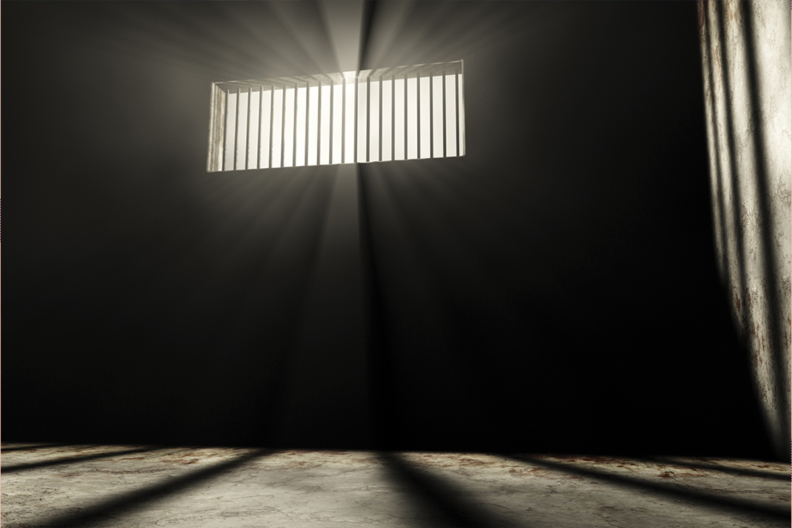Solitary Is Torture. Corrections Unions Want to Use it More Often
If we want to prevent the deaths of people like Layleen Polanco Xtravaganza or Kalief Browder, we can’t go back to torturing New Yorkers through long-term solitary.

This month marks the death of two New Yorkers who died too young in part because of solitary confinement. But even as we mark these two tragic anniversaries, some are trying to roll back critical reforms New York made to reduce the use of this barbaric punishment.
Layleen Polanco Xtravaganza was a transgender Afro-Latina who died alone on June 7, 2019 in solitary confinement on Rikers Island. The 27-year-old fixture of the ballroom community was held on $500 bail for misdemeanors. She died after she experienced a seizure while in solitary confinement. Layleen was placed in solitary despite the fact that corrections officials knew she had epilepsy, and then failed to follow protocols for checking in on her.
On June 6, 2015, 22-year-old Kalief Browder died by suicide after – among other extreme abuses – he spent two years in solitary confinement at Rikers. He was just 16 when he was locked up for allegedly stealing a backpack, before his case was ultimately dismissed. Kalief never recovered from the psychological impact of prolonged extreme isolation, and he took his own life shortly after he was released.
Solitary confinement that lasts more than 15 consecutive days is recognized by the United Nations and various human rights organizations as torture.
In 2016, the National Commission on Correctional Health Care issued guidance to correctional health officials explaining that this type of confinement beyond 15 consecutive days is “inhumane, degrading treatment, and harmful to an individual’s health.” Even short-term stays can lead to permanent psychological damage and suicidal ideation.
While prolonged solitary is harmful to everyone who experiences it, it is especially dangerous for certain groups, including those 21 or younger and 55 or older, pregnant people, people with disabilities, and people with mental illness.
Despite these well-documented harms, New York has put thousands of people in solitary confinement in jails and prisons across the state – sometimes for years – with little due process, and often for minor infractions.
Solitary confinement that lasts more than 15 consecutive days is recognized by the United Nations and various human rights organizations as torture.
Last year state lawmakers took a major step towards ending this brutal practice by passing the Humane Alternatives to Solitary Confinement (HALT) Act.
HALT prohibits solitary confinement for longer than 15 consecutive days, or 20 days total in any 60-day period. It also bans the use of solitary for vulnerable populations.
Critically, HALT requires jails and prisons to create units with access to rehabilitative services. Evidence-based programs like RSVP in San Francisco not only reduce violence behind bars, they also reduce recidivism and increase the chances people successfully reintegrate into society when they’re released.
HALT is a long-overdue measure designed to end one of the cruelest aspects of our criminal legal system. It also made New York one of the first states to adopt the UN’s Mandela Rules for the treatment of incarcerated people, a standard that should be followed throughout the country to limit torture in carceral facilities. But just two months after it went into effect, the law is already under attack.
For years, corrections officers and their unions opposed HALT and other reforms to end the torture of solitary confinement, and they have been fighting to repeal HALT since the law passed. They have even baselessly blamed HALT for violence in prisons and jails that took place before the law was enacted. The fearmongering around HALT is coming from the same forces responsible for incredible amounts of violence against people in prisons and jails around New York.
In New York City, where a judge appointed a federal monitor because of rampant abuse at Rikers Island, the Adams administration and the Corrections Officers Benevolent Association want to roll back key local protections that keep young people out of solitary. These are protections that – if they had been in place when Kalief was jailed – might have helped save his life.
There’s no evidence that more solitary confinement would make Rikers safer. The federal monitor even noted that increasing violence at Rikers is due to crumbling jail facilities and poor management of corrections officers, not a lack of solitary confinement.
This push for rollbacks comes while New York City operates a jail eight times more dangerous than similar jails, and where correction officers abuse young people with impunity.
Lawmakers must protect the important civil rights victory that HALT and other solitary reforms represent, and reject the unsubstantiated claims of corrections unions. State officials must also make sure that the rehabilitative programming mandated under HALT is implemented, that people have meaningful out-of-cell time, and that incarcerated people have access to legal representation. This will make jails and prisons safer for people in their custody, and those who work there.
If we want to prevent the deaths of people like Layleen or Kalief, we can’t go back to torturing New Yorkers through long-term solitary.
